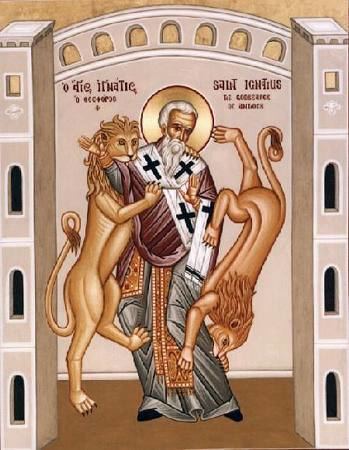 | ||
The term proto-orthodox Christianity, coined by New Testament scholar Bart D. Ehrman, describes the Early Christian movement which was the precursor of Christian orthodoxy. Ehrman argues that this group, which became prominent by the end of the 3rd century, "stifled its opposition, it claimed that its views had always been the majority position and that its rivals were, and always had been, ‘heretics,’ who willfully ‘chose’ to reject the ‘true belief’." (Critics such as Larry W. Hurtado argue for the traditional view that proto-orthodox Christianity arose directly from the immediate followers of Jesus.)
Contents
According to Ehrman, proto-orthodox Christianity bequeathed to subsequent generations "four Gospels to tell us virtually everything we know about the life, death, and resurrection of Jesus" and "handed down to us the entire New Testament, twenty-seven books [...]". Similar to later Chalcedonian views about Jesus, the proto-orthodox believed that Christ was both divine as well as a human being, not two halves joined together. Likewise they regarded God as three persons; the Father, the Son, and the Holy Spirit; but only one God.
Martyrdom played a major role in proto-orthodox Christianity, as exemplified in Ignatius of Antioch in the beginning of the second century. Imperial authorities arrested him "evidently for Christian activities" and condemned him as fodder for wild beasts. He expressed eagerness to die, expecting thus to "attain to God". Following Ignatius, many proto-orthodox theorists saw it as a privilege to die for faith. In fact martyrdom became a way to tell the true believers from the heretics. If someone wasn't willing to die for what they believed, they were seen as not dedicated to the faith.
Another facet of the faith was the structure of the church. It was very common - as it is today - for a church to have a leader. Ignatius wrote several letters to several churches instructing them to let the leaders (usually the bishops) handle all the problems within the church. He exhorted Church members to listen to the bishops as they were the leaders: "Be subject to the Bishop as to the commandment…We are clearly obligated to look upon the bishop as the Lord himself… You should do nothing apart from the bishop". The role of the bishop paved the way for hierarchies in churches that we often see today.
Another aspect important to mention about proto-orthodox Christianity involves its views on Jews and Jewish practices. An important book for them was the Epistle of Barnabas, which taught that the Jewish interpretation of the Old Testament was improperly literal, while the Epistle offered metaphorical interpretations as the truth, such as on laws concerning diet, fasting, and the Sabbath, moreover, that the Old Testament was specifically written to presage the coming of Jesus, and that not only did Christ's covenant supersede the Mosaic covenant, but that "the Jews had always adhered to a false religion".
Ehrman's position
In order to form a New Testament canon of uniquely Christian works, proto-orthodox Christians went through a process that was complete in the West by the beginning of the 5th century. Athanasius, bishop of Alexandria, Egypt, in his Easter letter of 367, listed the same twenty-seven New Testament books as found in the Canon of Trent. The first council that accepted the present canon of the New Testament may have been the Synod of Hippo Regius in North Africa (AD 393); the acts of this council, however, are lost. A brief summary of the acts was read at and accepted by the Councils of Carthage in 397 and 419.
To Ehrman, "Proto-orthodox Christians argued that Jesus Christ was both divine and human, that he was one being instead of two, and that he had taught his disciples the truth." This view that he is "a unity of both divine and human" (the Hypostatic union) is opposed to both Adoptionism (that Jesus was only human) and Docetism (that Christ was only divine).
For Ehrman, in the canonical gospels, Jesus is characterized as a Jewish faith healer who ministered to the most despised people of the local culture. Reports of miracle working were not uncommon during an era “in the ancient world [where] most people believed in miracles, or at least in their possibility.”
Criticism
The traditional Christian view is that orthodoxy emerged to codify and defend the traditions inherited from the Apostles themselves. Hurtado argues that Ehrman's "proto-orthodox" Christianity was linked to, and reliant upon, the earliest Christian expression of the faith in the Apostolic Age:
...to a remarkable extent early-second-century protoorthodox devotion to Jesus represents a concern to preserve, respect, promote, and develop what were by then becoming traditional expressions of belief and reverence, and that had originated in earlier years of the Christian movement. That is, proto-orthodox faith tended to affirm and develop devotional and confessional traditions... Arland Hultgren has shown that the roots of this appreciation of traditions of faith actually go back deeply and widely into first-century Christianity.
